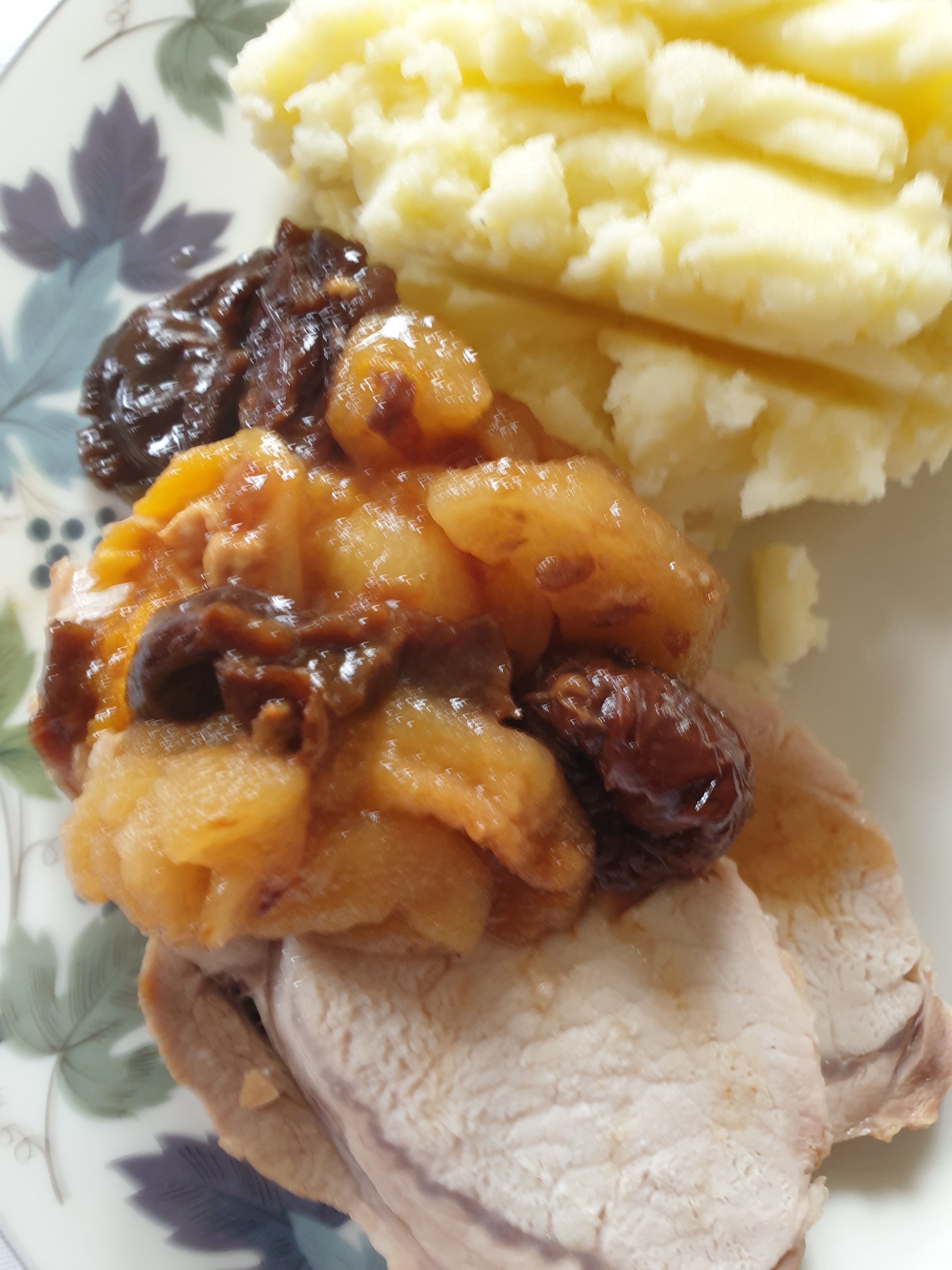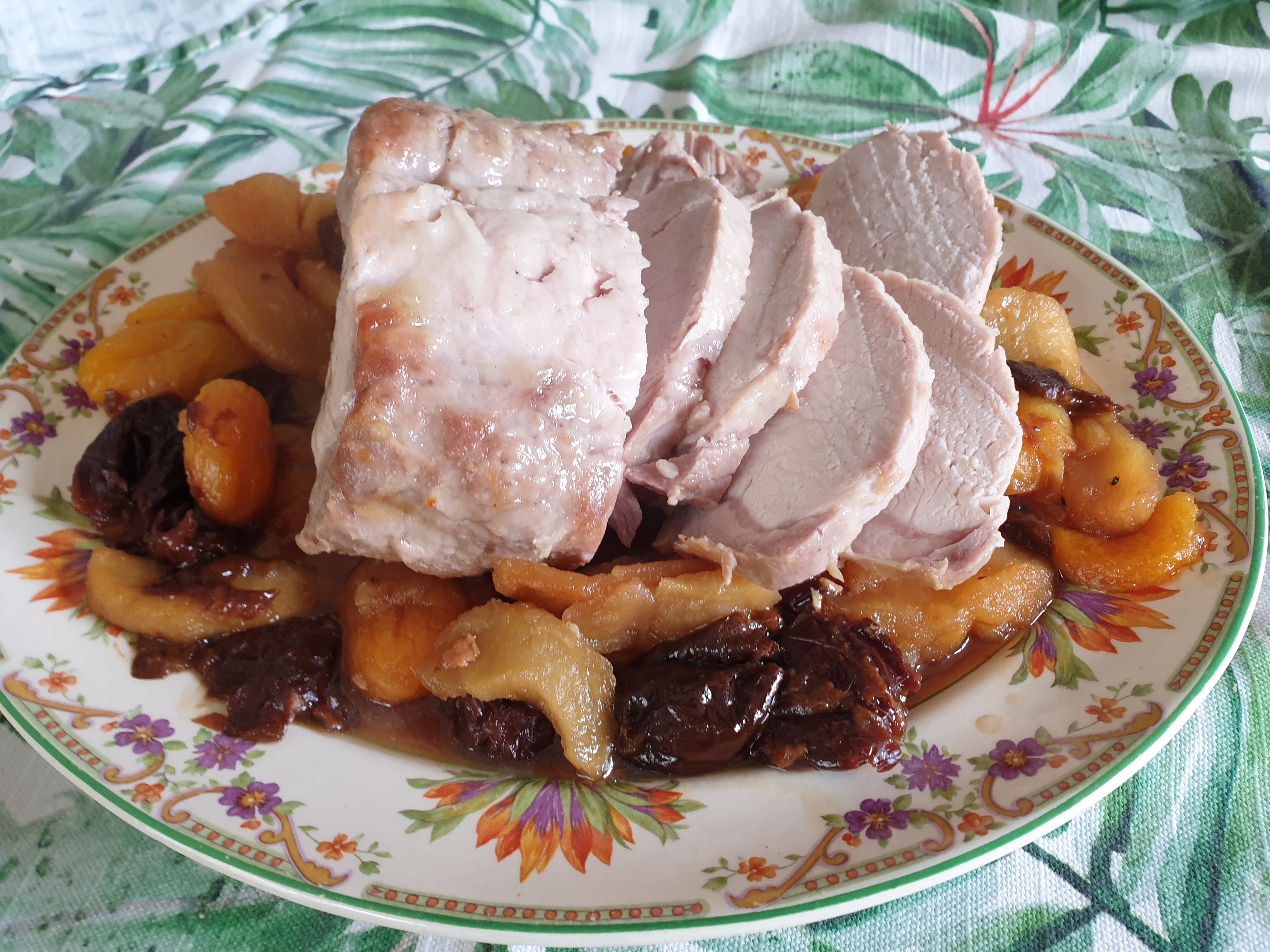My Polish friend who lives in Leeds often goes back to Poland to visit relatives and to have a holiday.
This summer she brought me back a recipe book which covers a year of meals (365 meals) divided into 4 sections – namely the 4 seasons.

There are lots of lovely recipes in the book and I am sure I will be trying many of them.
Here are two I have tried already – adapted slightly to make life easier!
Recipe 1 (autumn)
1 or 2 racks of pork ribs
2 tablespoons of raisins or sultanas
120g of ready to eat prunes
120g of ready to eat apricots
3-4 tablespoons of plain flour
3 large onions – chopped
500ml dry red wine ( more might be needed or some extra water)
4 peppercorns
4 grains of allspice
4 cloves
1 teaspoon of dried marjoram or Italian herbs
1/2 teaspoon of salt
3 – 4 eating apples (best if quite tart – such as Granny Smiths)
Sunflower oil for frying
Method
Place the apricots & raisins in a bowl and cover them with hot water and leave for around 30 minutes.
Pre-heat the oven to GM3 160°C.
Chop the ribs into 2 rib portions.
Put the flour onto a plate and then flour the ribs on both sides.
Fry the ribs lightly in hot oil on both sides.
Place the ribs in the bottom of a oven proof dish which has a lid.
Fry the onions until golden.
Slowly add some of the liquid from the soaked fruit and cook together mixing it well.
Add this to the ribs in the dish.
Add the peppercorns, allspice, cloves, marjoram and salt.
Pour the red wine over the rib mixture.
Place in the oven for around 45 minutes.
Cut the soaked apricots into strips and add these, the prunes and the raisins to the dish and give the mixture a stir.
Place back in the oven and cook for around 90 minutes to 2 hours until the meat is tender.
Check on the liquid level during this time and add wine or water if needed.
Remove the core from the apples and cut them into quarters (leave the skin on).
Place the apples, skin side down, on top of the ribs and place the lid back on.
Put the dish back in the oven for around 20 minutes.
When serving, place the cooked apples on top of the ribs and sauce.
Serve with boiled potatoes or rice.
Recipe 2 (spring)
Start this the evening before
Ingredients
1 or 2 racks of pork ribs
4 -5 tablespoons of runny honey
750 ml of apple juice (more might be needed)
Juice & finely grated rind of 1 lemon
100g of ready to eat prunes
3 -4 large tart apples (I used Bramleys)
3 cloves
Piece of cinnamon bark – around 10cm long
Method
Chop the ribs into 2 rib portions.
Coat both sides of the ribs with the honey and place them in a non-metal dish and sprinkle the lemon rind on the top.
Cover the dish and place it in a fridge overnight.
Next Day
Pre-heat the oven to GM3 160°C
Place the ribs into an oven proof dish which has a lid.
Add the cloves and cinnamon bark to the dish.
Peel, core and thickly slice the apples & sprinkle lemon juice on them.
Arrange the apples and prunes over the ribs.
Pour the apple juice over the contents.
Place the lid on top of the dish and put in the oven.
Cook for around 2 – 3 hours until the meat is tender.
You might have to add more apple juice when you check on the progress
Variation
Instead of ribs you might want to use slices of shoulder pork (750g – 1kg) the method is just the same.
I tried this with recipe 2 – the one with the apple juice.
Served here with boiled new potatoes and brussel sprouts à la Polonaise.
Serving dishes are Carnation by Royal Doulton, 1982 – 1998





















































































































